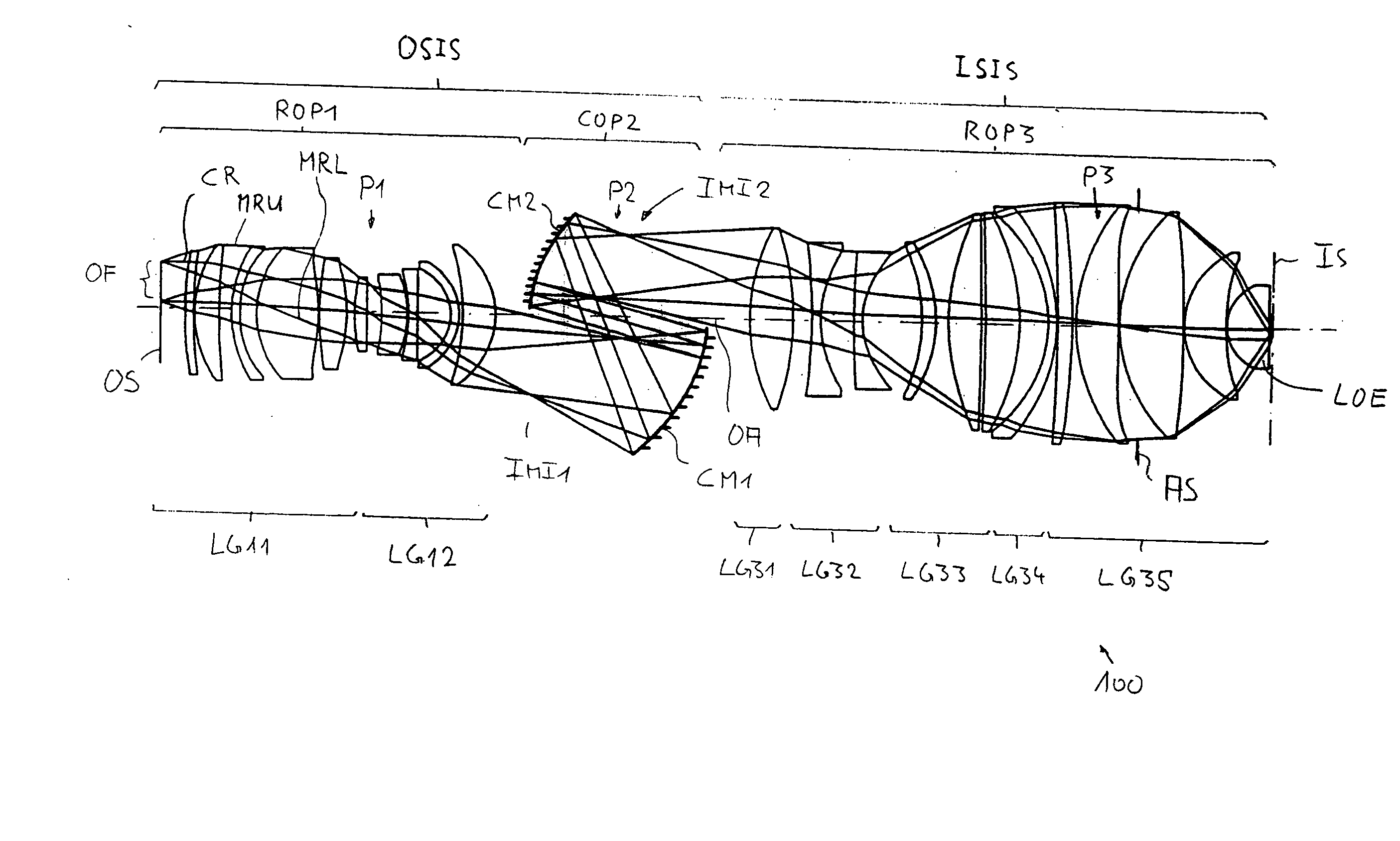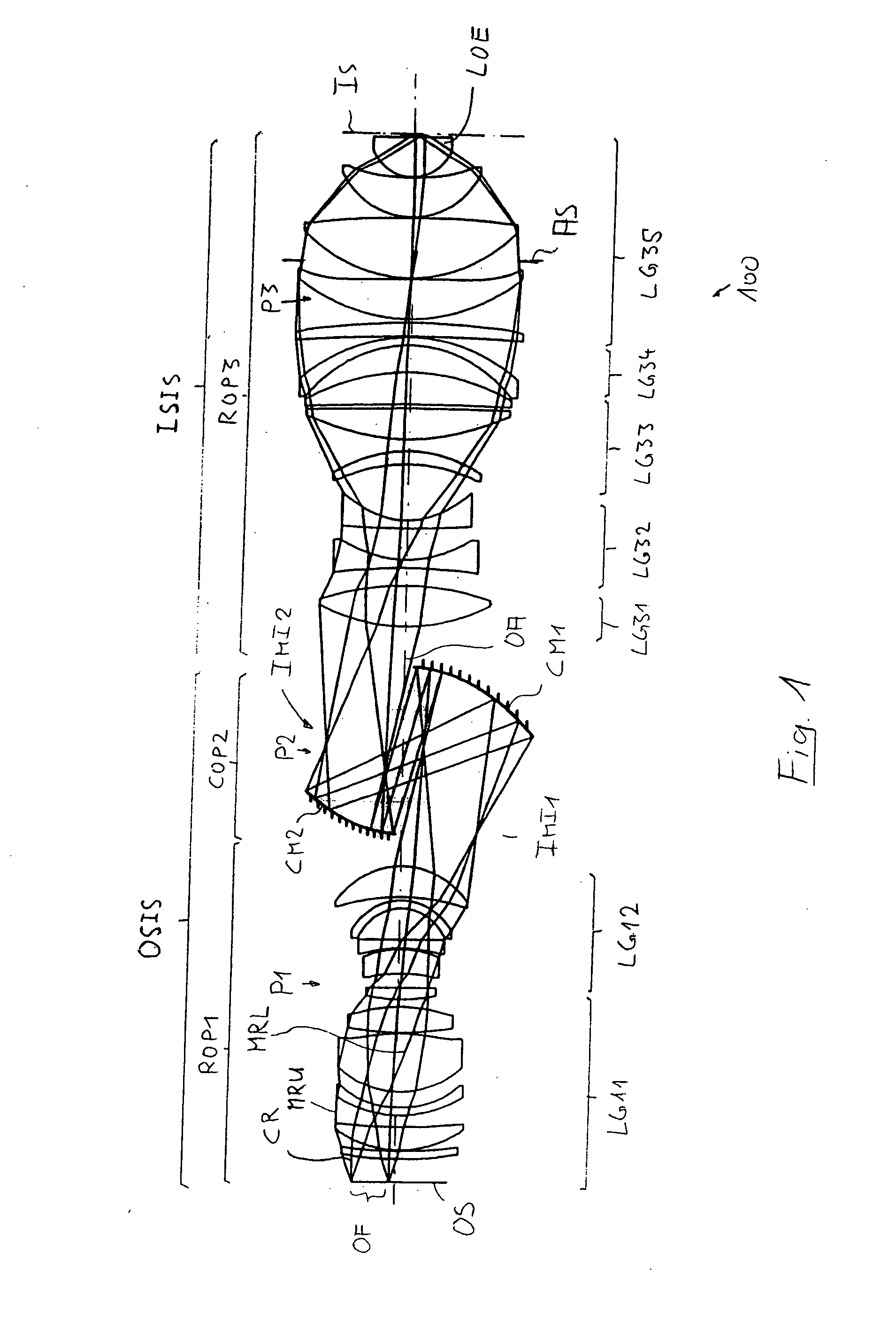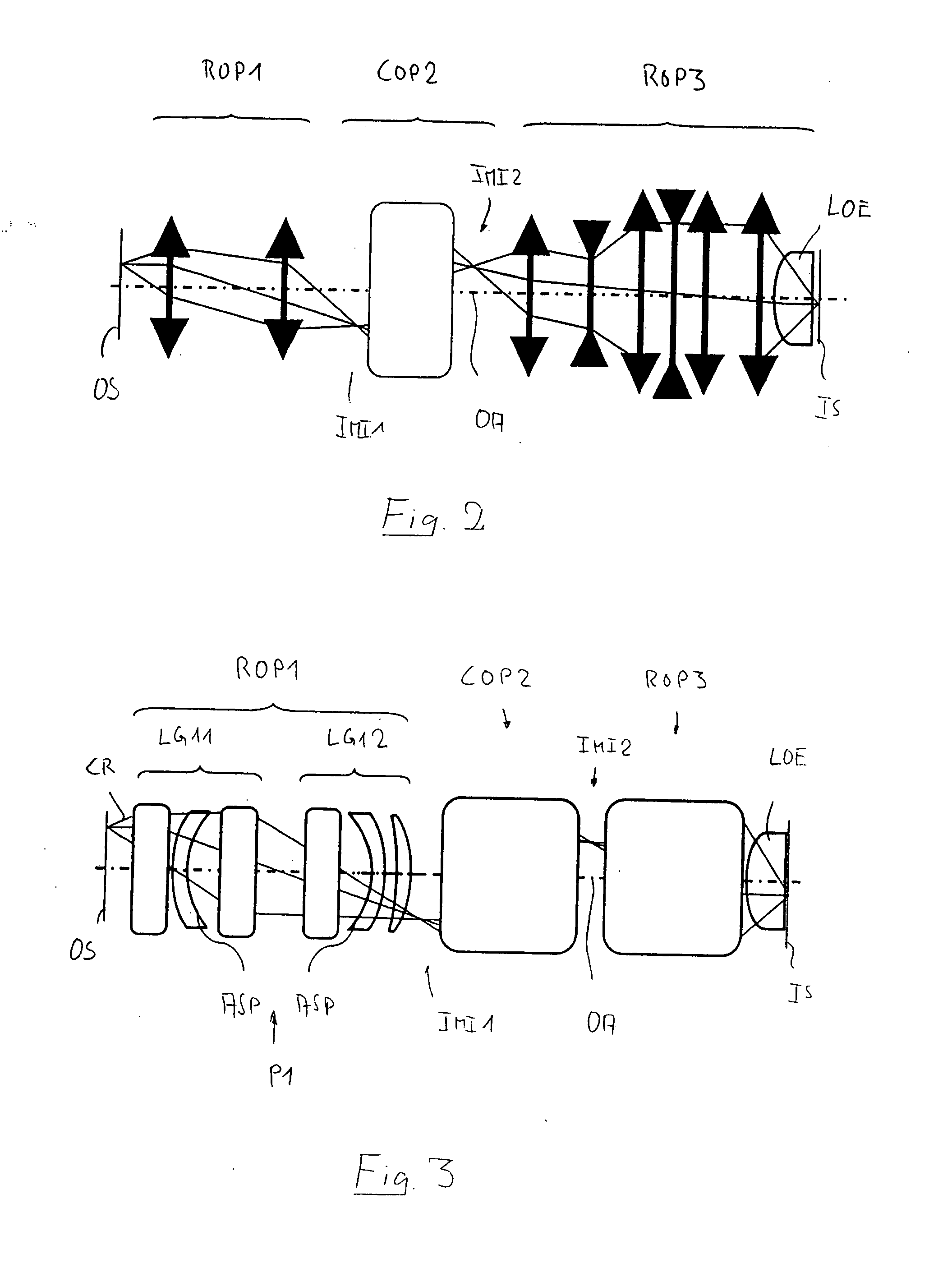High-na projection objective
a projection objective and high-na technology, applied in the field of catadioptric projection objectives, can solve the problems of limited supply, high-index materials in optical quality, and the theoretical limit of image-side numerical aperture is normally not reached, so as to reduce the maximum value of lens diameters
- Summary
- Abstract
- Description
- Claims
- Application Information
AI Technical Summary
Benefits of technology
Problems solved by technology
Method used
Image
Examples
first embodiment
[0063]FIG. 1 shows a catadioptric projection objective 100 according to the invention designed for about 193 nm UV working wavelength. It is designed to project an image of a pattern on a reticle (or mask) arranged in the planar object surface OS into the planar image surface IS on a reduced scale, for example, 4:1, while creating exactly two real intermediate images IMI1 and IMI2. A first refractive objective part ROP1 is designed for imaging the pattern arranged in the region of the object field OF in the object surface into the first intermediate image IMI1, a second, catoptric (purely reflective) objective part COP2 images the first intermediate image IMI1 into the second intermediate image IMI2, and a third, refractive objective part ROP3 images the second intermediate image IMI2 onto the image surface IS with a strong reduction ratio.
[0064] The second objective part COP2 comprises a first concave mirror CM1 having the concave mirror surface facing the object side, and a second...
third embodiment
[0086] a projection objective 500 shown in FIG. 5 (specification in tables 5, 5A) exemplifies which significant adjustments to the basic construction of the design can be made to obtain even higher NA values. Here, NA=1.50 is obtained at 193 nm in an image field having size 4 mm×22 mm, if an immersion medium having refractive index nI=1.65 is introduced in the 2.53 mm gap between the last optical element and the image surface.
[0087] A comparative view of the embodiments of FIGS. 4 and 5 reveals that a further increase of NA is facilitated by some modifications of the basic design. In the image-side imaging subsystem ISIS these modifications include an increase in diameter and refractive power of the primary positive lens group LG31, which is now formed by two consecutive positive lenses upstream of the primary negative lens group LG32. The primary negative lens group LG32 includes two consecutive negative lenses having image-side concave surfaces, where very high angles of incidence...
fourth embodiment
[0088] The fourth embodiment in FIG. 6 shows a catadioptric system designed for immersion lithography at 193 nm. The second negative lens group LG32 is positioned in a region with increasing beam diameters. The aperture stop AS is positioned in the front objective part.
PUM
 Login to View More
Login to View More Abstract
Description
Claims
Application Information
 Login to View More
Login to View More - R&D
- Intellectual Property
- Life Sciences
- Materials
- Tech Scout
- Unparalleled Data Quality
- Higher Quality Content
- 60% Fewer Hallucinations
Browse by: Latest US Patents, China's latest patents, Technical Efficacy Thesaurus, Application Domain, Technology Topic, Popular Technical Reports.
© 2025 PatSnap. All rights reserved.Legal|Privacy policy|Modern Slavery Act Transparency Statement|Sitemap|About US| Contact US: help@patsnap.com



